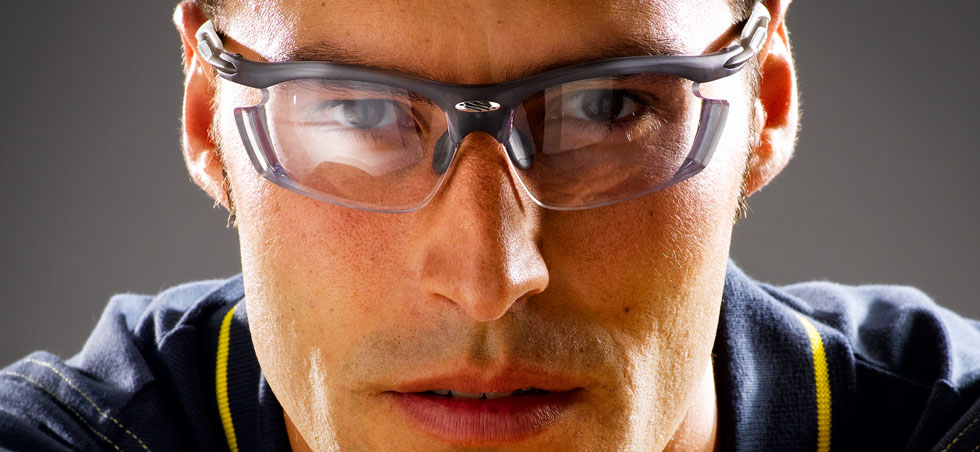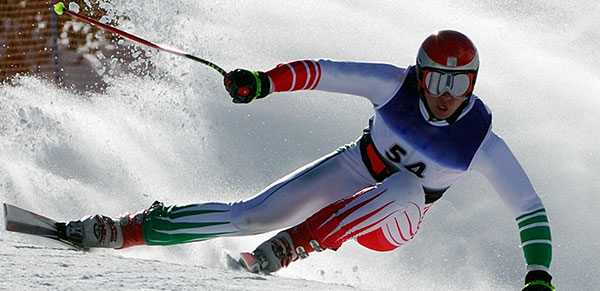Protective Eyewear – When did it all come about…
Eye protection has always been at the frontier of sports gear. Even today, you see it in nearly every sport, even in some of the sports that do not require it. From early on sports started using protective eyewear, long before most people think. Here are some of the sports and the dates that protective eyewear was implemented:
- Fencing — Mask (1200 B.C.)
- Baseball — Catcher’s Mask (1877)
- Skiing/Snowboarding — Goggles (1965)
- Basketball — Goggles (1968)
- Motor Racing — Full-Face Crash Helmet (1968)
- Hockey — Protective Visor (1973)
- Football — Protective Visor (1984)
- Racquetball — Goggles (1995)
- Soccer — Goggles (1999)
- Lacrosse — Goggles (2005)
- Field Hockey — Goggles (2011)
- Squash — Goggles (2012)
No regrets – You only have one set of eyes!
Eyewear with the purpose of protection is now becoming a trend in professional and non-professional sports. Not long ago most professional athletes did not wear anything for eye protection and eye injuries were extremely common. Due to the high amount of eye injuries, protective eyewear has became more prevalent over the past years and is now seen in nearly every sport, from squash and hockey all the way to water polo and snowboarding.
When protective eyewear first started showing a presence in sports, those who wore it were looked at funny and asked, “why are they wearing such a thing?”. However, those questions have quickly vanished and eyewear has become a fashion statement for some sports. Both kids and parents have now become more accepting and like the image of protective eyewear.
If you are choosing not to wear protective eyewear, consider this:
Sports that contain the use of balls, sticks, bats, racquets or flying objects pose a potential threat for an eye injury. Some sports seen as less harmful such as tennis and badminton involve an object that can move around 60 mph or faster. In a game of racquetball the ball can travel a various amount of speeds ranging between 60 and 200 miles per hour.
Do I have to wear goggles?
Everyday eyewear does not qualify as protective eyewear. When playing a sport or working on the job, protective eyewear is designed for these tasks and made not only to help your vision, but also to withstand impacts. Most sport frames now come with rubber padding around the nose area or wherever the frame comes into contact with the head attempting to add a cushion for the individual.
Most protective sport eyewear is made of polycarbonate. This material is chosen because not only does it have a high impact resistant lens but it also has built-in ultraviolet protection. The downside to using polycarbonate is that it can easily scratch. However, you can request to have a scratch resistant coating
Summer Brings Fun Filled Water Days – Protect Those Eyes
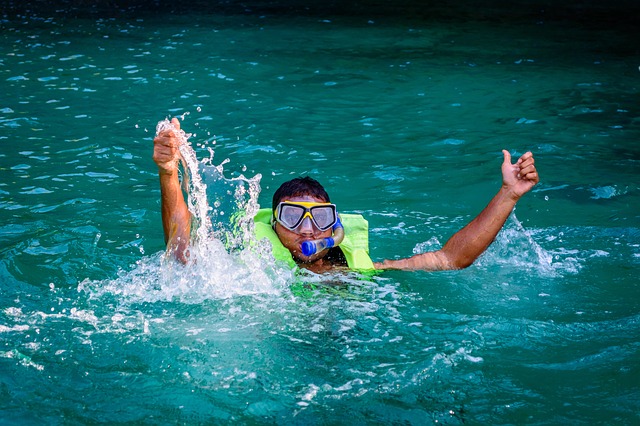
As summer approaches and the days get warmer, people will start using the pool and going to the beach more often. All that sounds great, but are your eyes protected while you’re enjoying the summer water? Simple things like a scuba diving mask or swimming goggles can both sharpen your vision and keep your eyes safe.
You might ask yourself, why swimming goggles or even a scuba mask is needed?
It’s simple, light acts differently in water than it does in the air, basically blurring (distorting) what you see. For example, when underwater objects appear larger and closer than they really are, your hand-eye coordination could be thrown off as a result of this. Water bends light differently than air, therefore your vision will be out of focus when your eyes come into contact with the water. To give you an idea, a person that has 20/20 vision on land, would be considered legally blind underwater. By using a mask or goggles you are allowing a pocket of air to be kept in front of you at all times, which allows light rays to travel to and through your eyes in a more accurate way.
Many of our patients that enjoy water sports have opted for laser vision correction, given that they have been deemed a candidate. Laser vision correction, such as our no-flap LASIK or upgraded refractive options, virtually eliminate or reduce the dependency of prescription eyewear. Imagine not having to worry about purchasing an expensive prescription scuba mask or swimming goggles. More so, the freedom from the cumbersome limitations that the above pose. Once again, imagine not having to deal with this…we can help.
KEEP YOUR EYES ON THE BALL – SPORTS EYE SAFETY
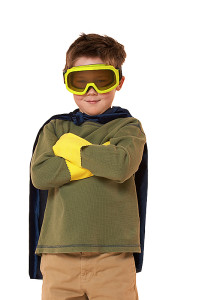 Always take precautions, especially with young children, when it comes to sports eye safety: wear helmets with built-in eye shields while playing little league ball.
Always take precautions, especially with young children, when it comes to sports eye safety: wear helmets with built-in eye shields while playing little league ball.
Impacts from other objects like tennis balls, racquet or squash balls, or even hand balls can be equally devastating. High-speed projectiles like paint balls or hockey pucks are very dangerous. Participants in any of these sports should take proper precautions to prevent fast moving objects from hitting them in the eye. They shouldn’t rely on “fast reflexes” to keep them safe! Sports goggles can be sight saving and have become more fashionable, available, and affordable.
Any participant in recreational or professional sports who suffers an eye injury, who has an eye disease, or who has had eye surgery should discuss with their eye doctor when they can safely return to their sport and what precautions they should take. A common sense approach to the real eye risks inherent in sports activities can make participants safer and minimize the chances of losing their precious eyesight.
By:
Robert S. Nagler, M.D.
Basketball Eye Safety Tips
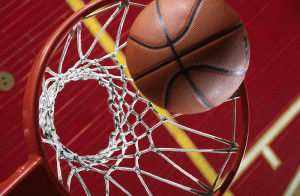 There are other sports that pose dangers to the eye. Basketball players are very susceptible to getting poked in the eye. Anything from a mere corneal abrasion to a more vision threatening injury can occur. Also, a flailing elbow can cause a fracture to the eye socket. Unfortunately, many basketball players only wear eye protection after sustaining a significant eye injury. Sports goggles can be sight saving and have become more fashionable, available, and affordable.
There are other sports that pose dangers to the eye. Basketball players are very susceptible to getting poked in the eye. Anything from a mere corneal abrasion to a more vision threatening injury can occur. Also, a flailing elbow can cause a fracture to the eye socket. Unfortunately, many basketball players only wear eye protection after sustaining a significant eye injury. Sports goggles can be sight saving and have become more fashionable, available, and affordable.
Any participant in recreational or professional sports who suffers an eye injury, who has an eye disease, or who has had eye surgery should discuss with their eye doctor when they can safely return to their sport and what precautions they should take. A common sense approach to the real eye risks inherent in sports activities can make participants safer and minimize the chances of losing their precious eyesight.
By:
Comprehensive Ophthalmology, Refractive & Cataract Surgery
Sports Eye Safety Awareness Month
Comprehensive Ophthalmology, Refractive & Cataract Surgery
Any participant in recreational sports who suffers an eye injury, who has an eye disease, or who has had eye surgery should discuss with their eye doctor when they can safely return to their sport and what precautions they should take. A common sense approach to the real eye risks inherent in sports activities can make participants safer and minimize the chances of losing their precious eyesight.
Do Not Put Your Eyes at Risk
Don’t put your eyes, something so highly valued at risk when wearing protective goggles or glasses is so simple, they can make a difference.
Prevent Blindness America states that each year more than 700,000 Americans injure their eyes at work. Another 125,000 Americans injure their eyes at home. Another 40,000 American children and adults suffer eye injuries during sports, while many more eye injuries go unreported. Experts say that using the proper safety goggles or glasses could prevent around 90% of all eye injuries. Depending on your lifestyle or work situation your safety goggles or glasses could vary.
Do you know the difference between safety goggles/glasses and regular eyeglasses?
Protective eyewear has to meet a higher standard for impact protection than normal eyewear. Protective or “safety” glasses can have prescription lenses or normal non-prescription (aka plano) lenses. Regardless of size or durability of the frame and lenses, regular everyday eyewear does not qualify as safety or protective eyewear, unless a specific criteria is meet (aka the higher standard). The higher standard is more commonly known as the safety guidelines for the workplace, which is established by the United States federal government. The goal of the government is to decrease the risk of injuries on the job. The Occupational Safety and Health Administration (OSHA) acts within the U.S. Department of Labor and oversees safety practices in the workplace and in educational settings.
Which Safety Goggles or Glasses are Best for Home Use?
For those who are independent contractors or even if you are working on your own home, one should choose the frame and the lenses that received the highest rating for high impact to be extra safe while on the job. The high impact lenses can be bought at most hardware, building supply and sporting good stores.
Most safety glasses are made of a very might polycarbonate, which is designed that way for comfort and come in attractive wrap-style frames. Styles that have the highest impact rating will have “Z87” on them.
If you need safety glasses and require prescription lenses you should consult an eye doctor or visit an optical store.
Safety Standards for Eyewear
American National Standards Institute (ANSI) Safety standards for eyewear consists of the following features:
- They go through basic impact tests where each lens is test on its own. For the higher impact class, the frame and lenses are together as one.
- Non-prescription lenses are considered to be structurally weaker than prescription lenses when being used for high impact; this is do to the prescription lenses being thicker.
- Safety lenses now have 2 classifications: basic and high impact
- The “Drop Ball” test, which will prove whether the basic impact is passed or failed. This test consists of a steel ball, one-inch in diameter being dropped onto the lens from 50 inches high. In order to pass the test the lens must not crack, chip or break. All safety lenses must go through this test. When using plastic lenses, only a sample of a rather large batch must undergo testing, not every pair of lenses.
- Another high impact test is one where a steel ball, a quarter inch in diameter is launched at the lens at a speed of 150 feet per second. In order to pass the lens must no chip, crack, break and cannot come undone or dislodge from the lens holder.
To determine if a safety goggle or glasses lens have passed the high speed test as described above, you will see a “+” marking, which confirms the lens success for high velocity impact. You should also look for these markings, “V” and “S”. The “V” indicates that the lens is photochromic. The “S” indicates that the lens has a special tint. In some cases (depending on use or job) some glasses or goggles may require or come with a mild to moderate tint. For example a person or job that requires you to cut or weld might require a thicker lens and a stronger tint.

